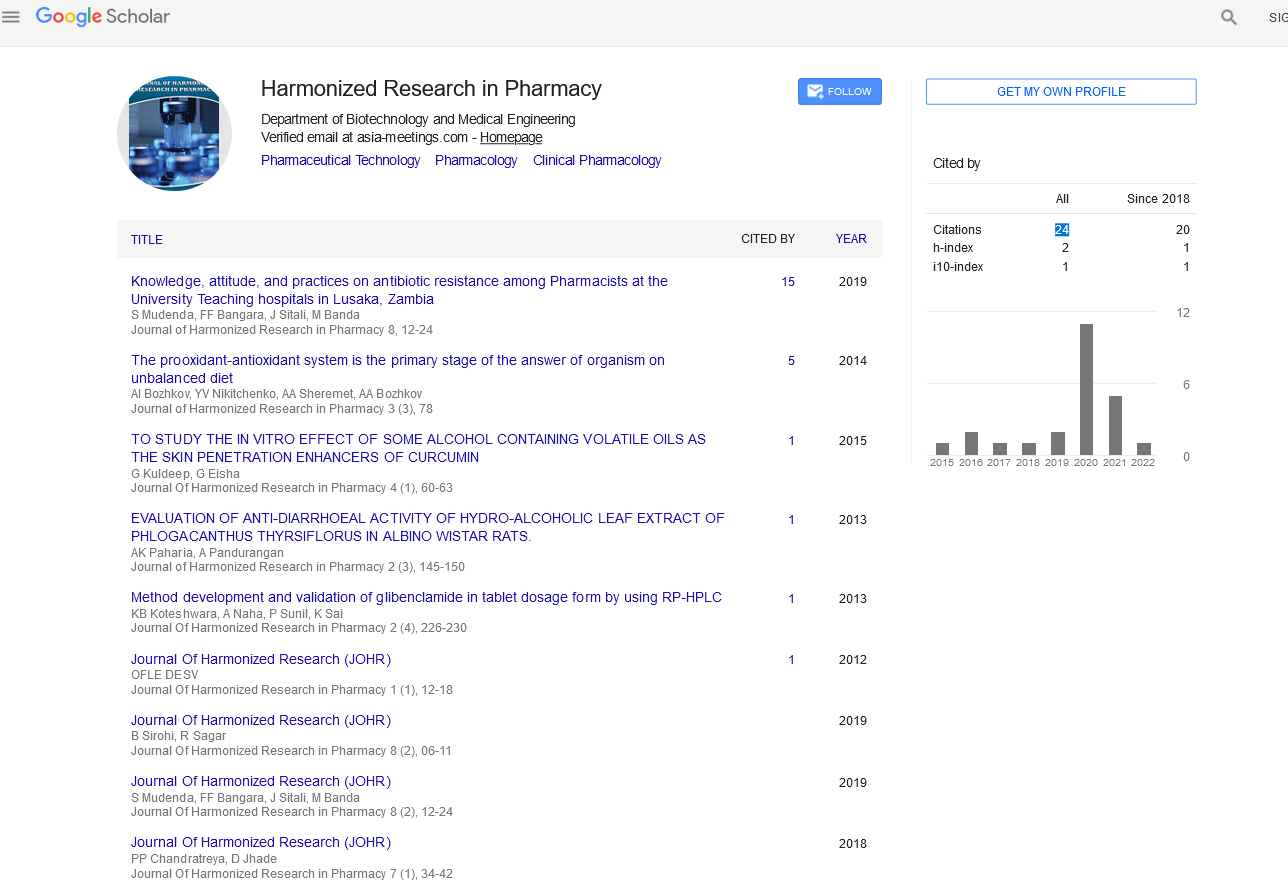Commentary - (2022) Volume 11, Issue 1
TREATMENT AND MECHANISM OF OVERDOSE TOXICITY DRUGS AND ITS DIAGNOSIS
Guan Wang*Received: Mar 01, 2022, Manuscript No. JHRP-22-62443; Editor assigned: Mar 04, 2022, Pre QC No. JHRP-22-62443 (PQ); Reviewed: Mar 18, 2022, QC No. JHRP-22-62443; Revised: Mar 25, 2022, Manuscript No. JHRP-22-62443 (R); Published: Apr 04, 2022, DOI: 10.30876/2321-0958.22.11.176
Description
Drug toxicity can occur as a result of drug overdose, if many drugs are in the human system at one time. This can occur if the dose taken intentionally or accidentally exceeds the prescribed dose. For certain drugs, drug toxicity can also occur as Adverse Drug Reaction (ADR). Toxicity refers to how toxic or potentially harmful a substance is. In the context of pharmacology, drug toxicity is when a person accumulates too much drug in the bloodstream and adversely affects the body. Drug toxicity can occur when the dose is too high or the liver or kidneys cannot be affected. Remove the drug from the bloodstream. This can lead to the build-up of medicines in the body. In some cases, like the drug lithium, the threshold between effective and toxic doses can be very narrow. The therapeutic dose for one person can be toxic to another. Drugs with a long half-life accumulate in the bloodstream of a person and can accumulate over time. In addition, factors such as age, kidney function, and fluid intake can affect the rate at which the body removes drugs from the system [1].
Toxicology studies are used in drug development to assess the safety and feasibility of potential drug candidates, and data from such studies are used to support regulatory submissions. It is well known that toxicity is a contributor to the elimination of drug candidates, and as the demand for faster and cheaper drug development increases, researchers can find ways to conduct toxicology research as efficiently as possible. Signs and symptoms of toxicity vary from drug to drug. In the case of lithium, various symptoms can occur depending on whether the toxicity is acute (single ingestion by a person who does not take it) or chronic (the effect of a drug that slowly accumulates to the level of toxicity by a person who takes it) [2].The low risk of overdose toxicity is often the reason doctors choose one drug over the other when both drugs are equally effective. For example, if you need a sedative, anxiolytic, or sleep aid, your doctor will prescribe benzodiazepines like diazepam or temazepam instead of barbiturates like phenobarbital. Benzodiazepines are less potent than barbiturates, but they have a wider safety margin and are much less likely to cause severe toxicity in the event of accidental or intentional overdose. Infants are at increased risk of overdose toxicity. Most of the colorful tablets and capsules are adult formulations and can attract the attention of infants and toddlers [3].
Acute toxicity is easy to diagnose because the symptoms follow a single dose of the drug. Blood tests can also check the level of drugs in a person’s bloodstream. Chronic toxicity is more difficult to diagnose. Stopping the drug and later “re-challenge” is one way to test if the symptoms are caused by the drug [4]. However, this method can be problematic if the drug is essential, there is no equivalent alternative. There are several ways to treat drug toxicity. If toxicity is the result of an acute overdose, a person may receive a gastric pump to get rid of drugs that have not yet been absorbed. Activated charcoal can be given to bind the drug and prevent it from being absorbed by the blood (instead, it is eliminated from the body in the stool). Other medicines can also be given as antidotes [5].
References
- Shimada H, Ikuta H, Kumazawa K, Nomi M, Shiojiri M, Kawase A, et al. Relationship between the risk of idiosyncratic drug toxicity and formation and degradation profiles of acyl-glucuronide metabolites of nonsteroidal anti-inflammatory drugs in rat liver microsomes. Eur J Pharm Sci. 2022;106193.
[Crossref] [Google Scholar] [Pubmed]
- Enescu CD, Artz C, Axelson A. Severe cutaneous drug toxicity following enfortumab vedotin treatment for metastatic urothelial carcinoma. JAAD Case Rep. 2022;21:140-3.
[Crossref] [Google Scholar] [Pubmed]
- Magné N, Bouleftour W, Daguenet E, Natier E, Maison M, Tinquaut , et al. Assessing toxicities of curative radiotherapy combined with concomitant non anti-cancer drugs: A sub-analysis of the prospective epidemiological RIT trial. Radiother Oncol. 2022.
[Crossref] [Google Scholar] [Pubmed]
- Gupta R, Rajpoot K, Tekade M, Sharma MC, Safavi M, Tekade RK. Factors influencing drug toxicity. InPharmacokinetics and Toxicokinetic Considerations. 2022; 27-50.
- Sengupta P, Chatterjee B, Tekade RK. Drug toxicity and forensic pharmacokinetics. InPharmacokinetics and Toxicokinetic Considerations. 2022; 425-486.

Google Scholar citation report
Citations : 147
Journal of Harmonized Research in Pharmacy received 147 citations as per google scholar report









